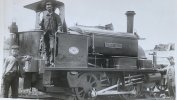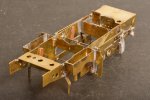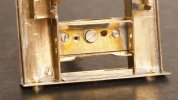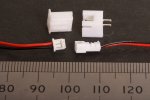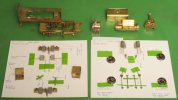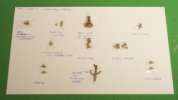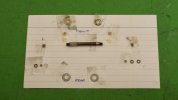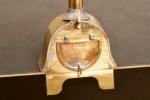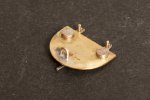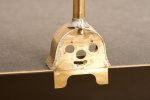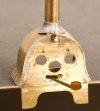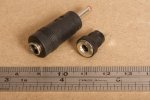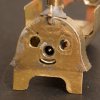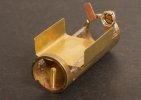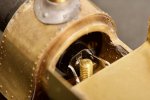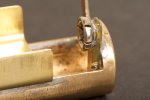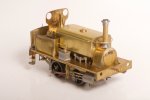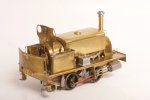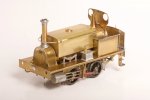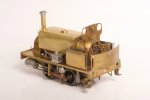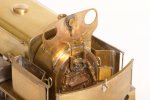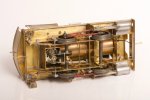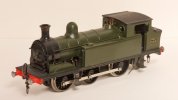Richard Gawler
Western Thunderer
From the user's point of view, power-cycling involves turning the model off and back on again. So it seems sensible to have the power switch accessible and I want to put mine in one of the coal bunkers, surrounded by coal to hide it.
After moving the switch off and then on again, then if the transmitter is within range of the receiver the system proceeds to re-establish a control connection ("binds") and the LED lights up solid within I suppose two or three seconds. You can then drive the train again.
The Micron system differs from the Fosworks one (in my Y14) in that at power-up (or after power-cycling) the Micron receiver immediately tries to bind to its previously-known transmitter. If it fails to do this promptly (for example, if you have left the transmitter switched off) then it enters its bind mode. I don't yet know the exact sequence(s) of events needed to recover from this, because I had an intermittent short circuit during much of my testing last week. Which made me quite weary. So I make sure the transmitter is switched on before switching on the model. Conversely, the Fosworks receiver arrives already set up to bind to the transmitter. I don't know the process to cause the Fosworks receiver to try to bind, but I do know can switch on either the transmitter or the receiver first and the system always immediately comes to life.
I haven't worked out the maximum range of the Micron radio system. It was completely reliable across a diagonal of the NEEGOG track, at which distance the train is getting difficult to see in detail. Around 12 metres.
Opinion: The usability of the Micron system is good if you accept the factory settings. You have to carry out a bind operation but only once. It is sensible to switch on the transmitter before the receiver. The usability gets difficult when you decide to alter the settings. The user interface to do this is the LED discussed above plus two push buttons, which you use to navigate the many menus. One button to advance through the menus, one button to accept a setting and proceed to the next level, multiple LED flashes to tell you the present level or setting. Micron have hinted at a graphical user interface to replace this, which sounds helpful for people who aren't good with these low-level, engineering-style interfaces.
After moving the switch off and then on again, then if the transmitter is within range of the receiver the system proceeds to re-establish a control connection ("binds") and the LED lights up solid within I suppose two or three seconds. You can then drive the train again.
The Micron system differs from the Fosworks one (in my Y14) in that at power-up (or after power-cycling) the Micron receiver immediately tries to bind to its previously-known transmitter. If it fails to do this promptly (for example, if you have left the transmitter switched off) then it enters its bind mode. I don't yet know the exact sequence(s) of events needed to recover from this, because I had an intermittent short circuit during much of my testing last week. Which made me quite weary. So I make sure the transmitter is switched on before switching on the model. Conversely, the Fosworks receiver arrives already set up to bind to the transmitter. I don't know the process to cause the Fosworks receiver to try to bind, but I do know can switch on either the transmitter or the receiver first and the system always immediately comes to life.
I haven't worked out the maximum range of the Micron radio system. It was completely reliable across a diagonal of the NEEGOG track, at which distance the train is getting difficult to see in detail. Around 12 metres.
Opinion: The usability of the Micron system is good if you accept the factory settings. You have to carry out a bind operation but only once. It is sensible to switch on the transmitter before the receiver. The usability gets difficult when you decide to alter the settings. The user interface to do this is the LED discussed above plus two push buttons, which you use to navigate the many menus. One button to advance through the menus, one button to accept a setting and proceed to the next level, multiple LED flashes to tell you the present level or setting. Micron have hinted at a graphical user interface to replace this, which sounds helpful for people who aren't good with these low-level, engineering-style interfaces.
Last edited:


